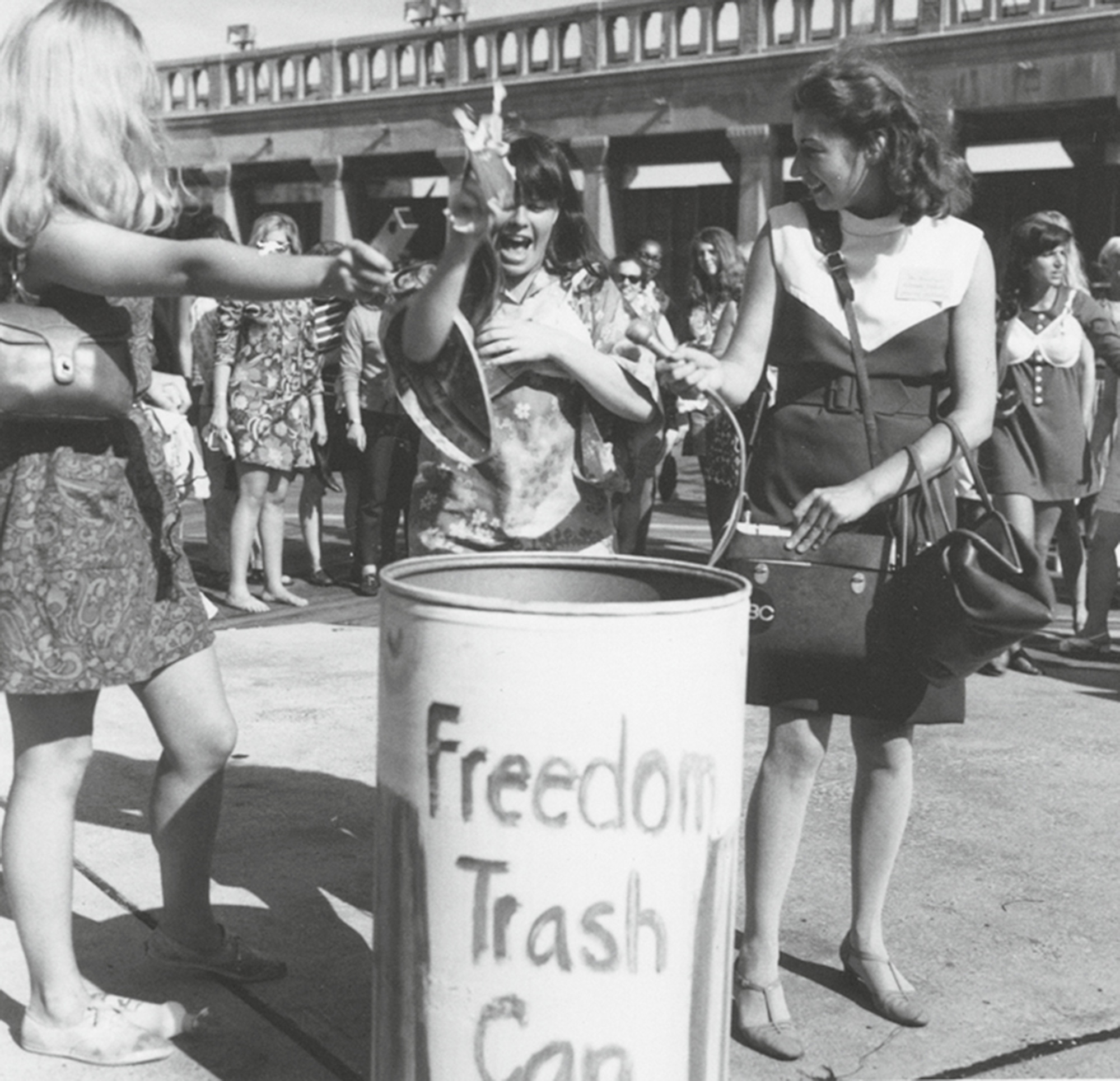There She Goes
The 1968 Miss America pageant reconsidered
Julia Sherman

When research for an artwork led me to the women’s liberation protests against the 1968 Miss America Pageant, I couldn’t help imagine what my involvement would’ve been had I been alive at the time. As someone who’s always touted her feminist identity, it seemed obvious that I would’ve assumed a place on the frontlines with ease. But the more I learned about the event, its context and consequences, the less clear my allegiances became.[1]
The Miss America protest was a turning point, both for those involved and for the broader American public. Its media coverage drew national attention to the nascent women’s liberation movement and (to a lesser extent) the sexism of beauty pageants. But it also bequeathed a disturbingly reductive binary to future generations: not only did the stereotype of the angry “bra-burning” feminist crystallize here[2] but the already dehumanized figure of the beauty queen was collapsed into the radical feminist’s one-dimensional antithesis. While by far the most famous, the 1968 protest was by no means the sole critical response to Miss America: from the mid-1950s through the 1960s, a number of “spin-off” pageants emerged. The Hawaiian Miss Cherry Blossom Queen Pageant, the Miss Black America Pageant, the Miss Indian America Pageant, and the Miss (Drag) America Pageant were all appropriations that destabilized a theretofore seemingly unflappable institution. The tension between the two modes of critique—the anti-pageant protest, on the one hand, and the alterna-pageants, on the other—can be read as an allegory of deep, long-standing divisions within the women’s movement and of varying conceptions of political contestation.
This same tension, moreover, was present within the Miss America protest itself, which was organized by New York Radical Women, an early second-wave feminist cell active from 1967 to 1969. According to a former New York Radical, its members were responsible for developing the now widespread strategy of consciousness raising: in lieu of studying books or consulting experts, they endeavored to understand the causes and nature of women’s oppression through personal experience and first-hand accounts. This soon led to “consciousness-raising actions,” which were intended to move beyond the confines of private meetings to challenge and educate the public at large. The Miss America Pageant protest was the first of such actions.[3]

The first phase of the protest took place on the Atlantic City boardwalk outside the pageant, just before the nationally televised event began. The women performed a series of skits in a manner some of them later characterized as “filled with glee.” There was a Freedom Trash Can for the disposal of “articles of female torture,” such as high heels, Playboy magazine, Ladies’ Home Journal, and, allegedly, those infamous burning bras. Original satirical songs were sung, and a live sheep was crowned queen as the growing crowd of spectators was enlisted to participate in these cleve